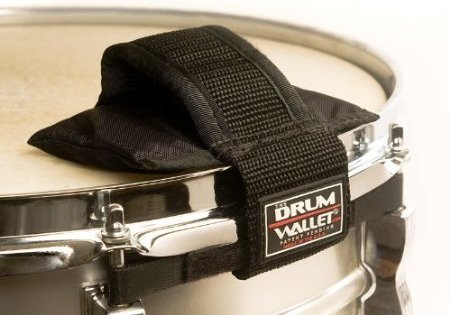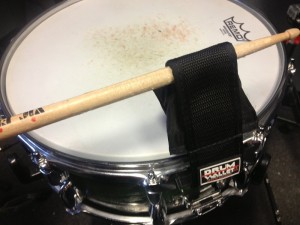1. Stick Control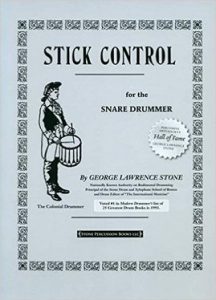
By: George Lawrence Stone
First Published: 1935
Publisher: Stone Percussion Books, LLC
Book Premise: Series of hand exercises that were designed to serve drummers of all levels and styles. The exercises help improve control, speed, endurance, and touch, with equal attention given to both hands.
Why it will last a lifetime: George Lawrence Stone’s stick control has become the bible for drumming education. The simplicity of the design enables the book to be used in a multitude of ways. For example, you can play a foot pattern underneath the examples or you can just simply read the exercises with your feet. You can play all the rights with your bass drum while playing the lefts on the snare or reverse that scenario while adding in your hi-hat on certain beats–the list goes on and on and so will your relationship with this classic drum book.
2. Progressive Steps to Syncopation for the Modern Drummer 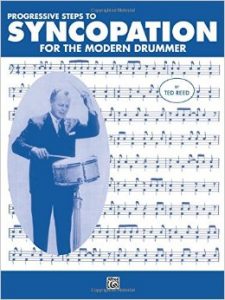
By: Ted Reed
First Published: 1958
Publisher: Alfred Music
Book Premise: Better known by drummers as “Syncopation” this book was designed to address just that. This book also includes many accented eighths, dotted eighths and sixteenths, eighth-note triplets and sixteenth notes for extended solos.
Why it will last a lifetime: Many drummers have developed systems to be used with different sections of this book thus making it a great tool to develop independence, coordination, and reading chops. Jazz master and educator, Alan Dawson developed about forty different systems to be used with this book. One of his students–John Ramsay wrote a book that includes this information (see #5 below). This classic is also a “must have” for anyone looking to develop their reading with swung eighth note interpretations.
3. The New Breed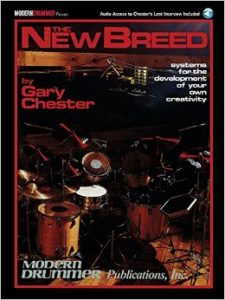
By: Gary Chester
First Published: 1985
Publisher: Modern Drummer Publications
Book Premise: Written by an extremely prolific and skilled studio drummer this practical book aims to develop all four limbs towards drum set mastery. Gary Chester accomplished this by creating 39 systems that go along with the exercises of his book. The systems assign different rhythmic patterns to different limbs. Master all 39 systems and you’ll have a vast amount of independence and control to play different styles as needed.
Why it will last a lifetime: The book is designed to be completed 39 times. You can also make up your own systems once you have mastered Chester’s methods.
4. Modern Reading Text in 4/4 For All Instruments 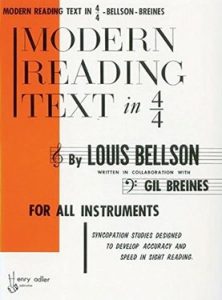
By: Louie Bellson and Gil Breins
First Published: 1963
Publisher: Alfred Music
Book Premise: Syncopation exercises designed to develop speed and accuracy while sight reading. The text entails every possible placement of notes and rests which are written out sequentially as the book unfolds.
Why it will last a lifetime: Similar to Ted Reed’s masterpiece, this book has been used by educators to add different systems to play the exercises. Just about every rhythmic combination that can exist in 4/4 time is written out in this book–done so incrementally. You will need plenty of time to master this book as well.
5. The Drummer’s Complete Vocabulary as taught by Alan Dawson 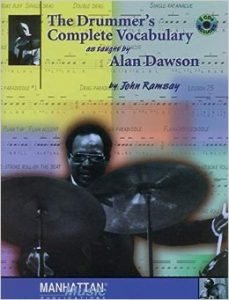
By: Alan Dawson and John Ramsay
First Published: 1996
Publisher: Alfred Music
Book Premise: Alan Dawson (July 14, 1929 – February 23, 1996) was a true jazz master and a widely influential teacher based in Boston. Written by one of Alan Dawson’s prominent students–John Ramsay, the book contains all the important techniques and concepts that Dawson embraced in his own playing and subsequently taught to his students.
Why it will last a lifetime: The first part of the book includes Dawson’s infamous “Rudimental Ritual.” You’ll have the rest of your life to work on the latter parts of his book which includes the systems he used with both Syncopation for the Modern Drummer and Stick Control.


